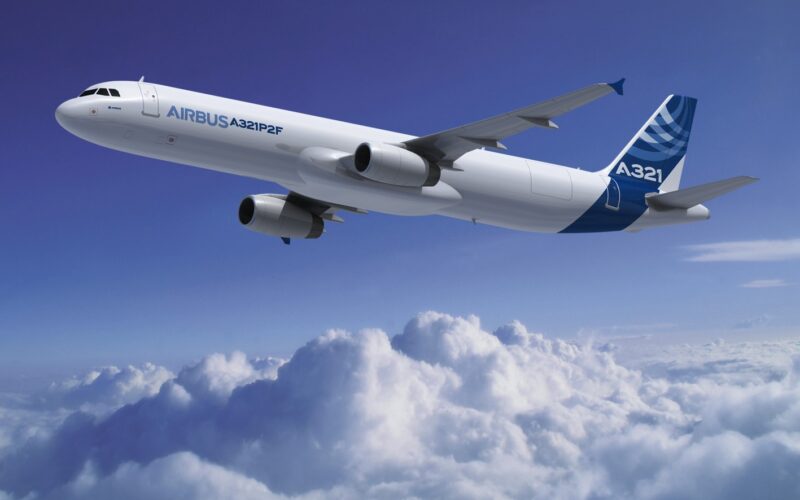The European Union Aviation Safety Agency (EASA) has introduced more stringent fuselage checks for the A321 P2F, based on the A321ceo, after the conversion supplemental type certificate (STC) holder assessed the inspection cycles for converted aircraft of the type.
According to EASA, which published the Airworthiness Directive (AD) for the Airbus A321 P2F on September 12, 2023, during the A321XLR’s certification and fatigue and damage tolerance harmonization of the Airbus A320 aircraft family, “a new stress calculation was accomplished for the [Center Wing Box (CWB)] and slanted junction areas at FR42”.
“Results of stress analyses have highlighted high fatigue stress in the affected areas where cracks may appear with the current inspection regime,” the directive continued.
EASA warned that if operators do not address this condition, it could affect the “structural integrity of the fuselage” of the A321ceo, and by extension the A321 P2F.
However, the European regulator noted that the holder of the conversion STC, ELBE Flugzeugwerke, “assessed the impact of the load distribution resulted from STC-modification and determined that reduced compliance time is necessary for modified aeroplanes”.
As such, EASA has introduced corrected flight cycle (FC) compliance times for the A321 P2F.
New compliance requirements for A321 P2Fs
Operators of the A321 P2F will now be required to conduct fuselage checks before exceeding 30,000 FCs after the manufacturing date of the aircraft or within six months of the effective date of the AD, whichever comes later.
If an A321 P2F frame has more than 30,000 FCs but fewer than 47,500 cycles, airlines must then check the CWB for cracks within six months of the AD’s effective date, without exceeding three months after having accumulated 47,500 FCs since the original manufacturing date.
Lastly, if an A321 P2F has more than 47,500 FCs, checks need to be undertaken within three months after the effective date of the directive.
EASA noted that the effective date of the AD is September 26, 2023.
In the event that cracks are found in the CWB, EASA urged operators to contact Airbus and ELBE Flugzeugwerke “for approved repair instructions and, within the compliance time specified therein, accomplish those instructions accordingly” before the aircraft’s next flight.
EASA issued the original A321ceo directive in April 2023, with an effective date of April 19, 2023. At that point, the regulator demanded that airlines check for cracks before an A321ceo exceeded 31,000 FCs since the original date of manufacturing, or within six months of the effective date of that AD, whichever falls later.
If an aircraft had more than 31,000 FCs but no more than 49,000 FCs, the next check needed to be done within six months of the effective date of that AD without going longer than three months after exceeding 49,000 FCs.
For aircraft with more than 49,000 FCs, the checks had to be completed three months after the effective date of April 19, 2023.
According to ch-aviation.com data, there are a total of 24 Airbus A321 P2Fs, flying cargo with 13 different airlines. That number includes an A321 P2F that is registered as N974M, which has no assigned operator as of yet.
Meanwhile, there are 11 Airbus A321 PCF conversions, whose STC belongs to another company, namely Precision Aircraft Solutions. That STC was awarded by the United States (US) Federal Aviation Administration (FAA) in April 2021.
As yet, the FAA’s AD to address the A321ceo cracks is still in the proposal stage, with the regulator accepting comments from stakeholders until October 23, 2023.

